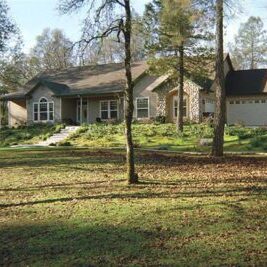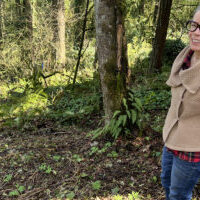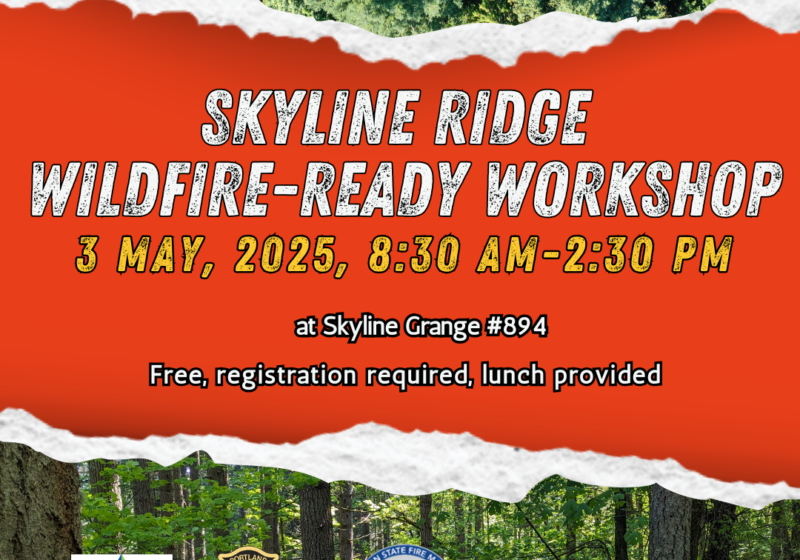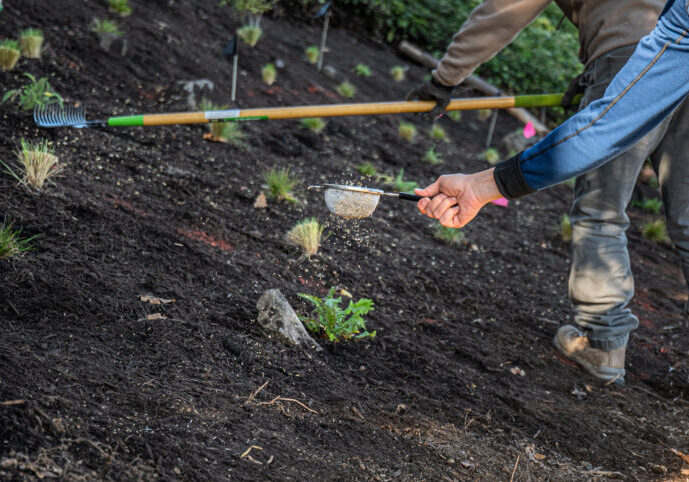Forest Conservation
Services
Forest stewardship planning
We can help:
Contact Forest Conservationist Laura Taylor about designing a plan for your forest.
503-238-4775 laura@wmswcd.org.
A forest stewardship plan is a document we develop in collaboration with you that describes your goals for the forest, its current condition, and recommendations for long-term care. The plan will detail the trees, soil, plants, wildlife, and water that you currently have on your property, and how to care for them. The planning process will help you imagine how you want your forest or woodland to look in 5, 25, or 50 years.
As our climate becomes more unpredictable, we can help you tend to your forest so that it is more resilient—more able to survive or recover from threats such as droughtDrought A longer than normal time with not enough rain, heatwaves, fire, storms, and outbreaks from pests and disease.
We can provide strategies that you can use in your forest to increase its health and resiliency. We will help you learn how you can enhance biodiversity, connectivityConnectivity the degree to which patches of landscape are connected, either helping or impeding animal movement and other ecological processes like the flow of water or dispersal of seeds, soil health, and carbon sequestration to give your forest—and our broader environment—a better chance at maintaining health and resiliency into the future.
Having a forest stewardship plan in place is the first step to accessing our other Forest Conservation services and those of our federal partners at the USDA Natural Resources Conservation Service. It can also help forested properties be eligible for forest tax deferral.
Properties with 5 acres or more of forested land are eligible for help with a forest stewardship plan.
Tree thinning
Learn more:
The goal for many tree thinning projects is to reduce competition for sunlight and nutrients and provide more space for the remaining trees to grow. Growing larger trees more quickly can enhance habitat for wildlife that nest and feed in bigger trees. Also, trees that are growing vigorously are often healthier and more resistant to drought, disease, insect pests, and even wildfire damage. Tree thinning combined with planting new trees and understoryUnderstory The area under and around trees plants also increases the biodiversity of the forest which further supports forest health and resiliency.
When to thin?
-
If some tree crowns are smaller than others
-
If the understory is heavily shaded and there are few shrubs, ferns, or wildflowers
-
Measure tree spacing and tree diameters to gather more data to support a decision on thinning. We can help complete these measurements as part of a forest stewardship plan.
-
We can help design and implement tree thinning, invasive weed management, and tree and understory planting for those who have completed a forest stewardship plan. These projects may also be eligible for financial assistance.
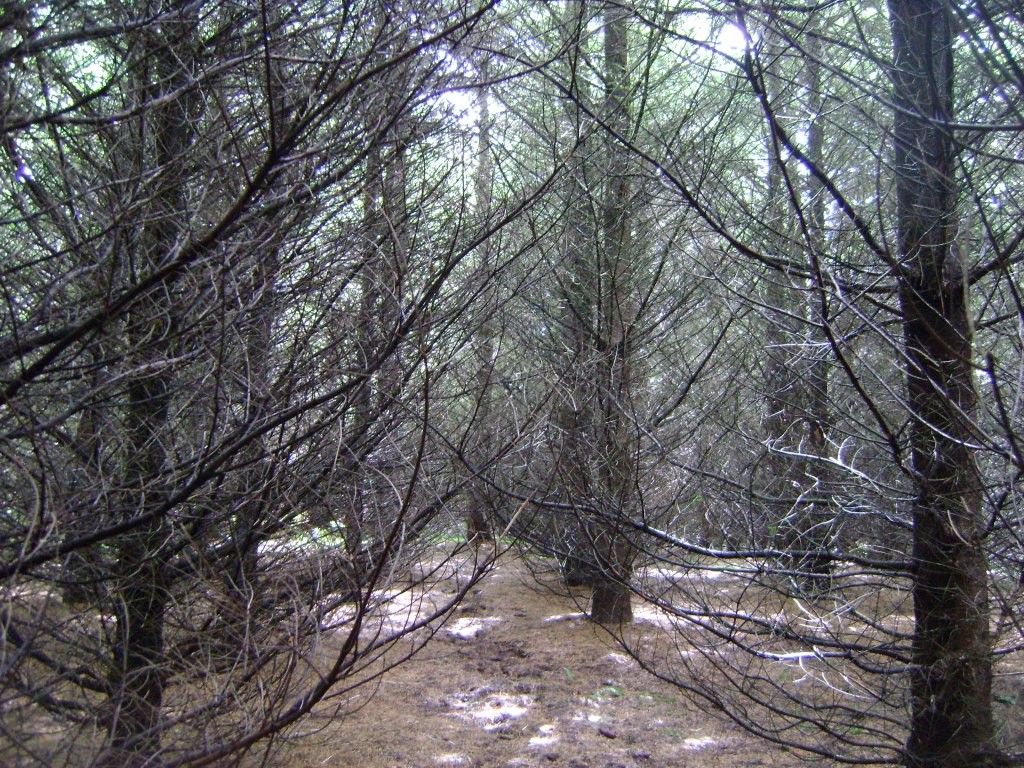
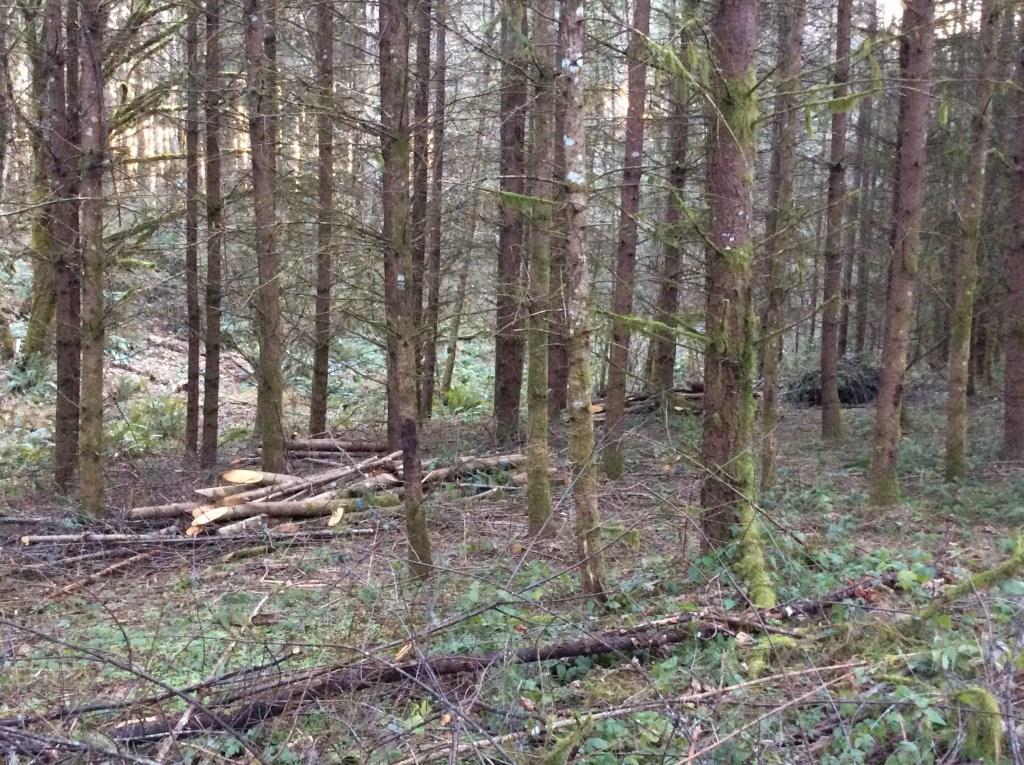
There is very little ground vegetation in this densely forested area, pictured at left. A thinning project will allow more light to the forest floor where wildflowers and shrubs could grow as shown on the right.
Wildfire risk reduction
On the west side of the Cascade Range, we’re unaccustomed to wildfires in our “backyards” despite their historic presence on the landscape. Fires in this relatively wetter part of the state historically occur every 150-500 years, compared to the dry east side of the state where fires can happen naturally every 2-50 years.
With changing weather patterns and longer and more intense wildfire seasons, it’s time for our communities to become better adapted to wildfire risk.
-
Fire-Resistant Native Plants of Western Multnomah County, Oregon
-
Fire-resistant plants for home landscapes
An Oregon State University Extension Service publication
View and download resource
Learn how to prepare your family and home for wildfire.
If you see something that could present a wildfire risk, call your local Fire & Rescue. Call 911 if you’ve see an active fire emergency.
FireWise communities
-
Firewise Communities/USA program
The Firewise Communities/USA program is designed to provide a community-tailored approach to better ensure community members maximum protection from wildfires.
Visit nfpa.org for more information -
Portland Fire & Rescue, Firewise Community Program
Forest conservation easements
A conservation easement is a voluntary legal agreement that protects natural areas such as forests on your land for the long term. This ensures that even if you or your family no longer own the land, the forest will be protected and managed according to the conservation goals you established.
We are partnering with the Forest Park Conservancy to develop conservation easements on properties that demonstrate a high level of conservation value in the Greater Forest Park Conservation Initiative area.
We can help you develop a forest stewardship plan outlining your long-term conservation goals and a strategy for helping the forest move toward those goals. This forest stewardship plan then provides the Forest Park Conservancy with the information they need to develop of a conservation easement for your property. Learn more about the Forest Park Conservancy conservation program.
We provide support
Find out if you're in our service area.
Find more information related to caring for your forest:
Forest conservation resources
-
Reducing Fire Risk on Your Property
A Pacific Northwest Extension publication
View and download resource -
Oregon Wildfire Response & Recovery
The state's dashboard for wildfire resources
View resource -
Thinning Systems for Western Oregon Douglas-fir Stands
Guidelines for forest thinning
View and download resource -
Designing and maintaining forest roads
An Oregon State University Extension Service publication
View and download resource -
Oregon State University Forestry & Natural Resources Extension
-
Oregon State University Extension Service, Tree School
-
Oregon Small Woodlands Association
-
Oregon Tree Farm System
-
Forest Stewardship Council
-
Forest Stewards Guild
-
Conservation Directory
Find products and services from local businesses that can help you get your conservation project done. This directory is maintained by East Multnomah Soil and Water Conservation District and may not be a comprehensive list of providers.
Find resources for your conservation project.
Staff contact
Laura Taylor
Forest Conservationist
Contact me about:
Forest and woodland health; Wildfire risk in rural forests; Plants; Pollinators.
